New products at Crocus
by Sarah - August 14th, 2010.Filed under: Crocus, New Products.
New products at Crocus
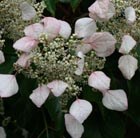
Japanese hydrangea vine £19.99
Position: full sun or partial shadeSoil: moderately fertile, humus-rich, moist but well-drained soilRate of growth: initially slow-to-establish Flowering period: July Flower colour: creamy-whiteOther features: toothed, dark green leaves on long stalksHardiness: fully hardyAn attractive deciduous climber producing slightly fragrant, creamy- white flower-heads up to 25cm across, that resemble lacecap hydrangeas, in mid-summer. Japanese hydrangea vine is ideal for covering a large wall or fence or for training through a robust tree. Initially it is slow-to-establish, but it copes well with most conditions except extremely alkaline soil. As it grows it will attach itself to its support by aerial roots.Garden care: Plant at least 60cm (24in) away from a host plant, fence or wall. Tie in to a support and train until established. After flowering cut back the flowered shoots to within 2-4 of the permanent framework of the plant.
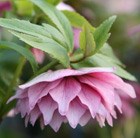
hellebore £10.99
Position: partial shadeSoil: any moist, neutral to alkaline soil, including heavy soilRate of growth: average Flowering period: February to AprilOther features: all parts of the plant cause severe discomfort if ingested; the sap may cause skin irritation; dark greyish-green leaves give off an unpleasant odour when crushedHardiness: fully hardyShowy, nodding or outward-facing, saucer-shaped, pink double flowers appear from late winter to early spring. The handsome evergreen foliage is leathery, deeply cut and dark green. This lenten rose is grown from seed, so colour variations may occur, and some are speckled inside. It looks best planted in groups at the front of a partially shady mixed border, or under shrubs among spring-flowering bulbs. In former times, hellebores were planted close to cottage doors to prevent evil spirits crossing the threshold.Garden care: A top tip from the Crocus crew is to cut back the old leaves to the ground in January or February. This will show off the emerging flowers to best effect and it also helps to get rid of foliar diseases such as hellebore leaf spot. When planting, add lots of well-rotted leaf mould or organic matter to the planting hole. Apply a generous 5-7cm (2-3in) mulch of well-rotted organic matter around the base of the plant in autumn and provide a top-dressing of general fertiliser each spring.

blueberry – early fruiting £9.99
Position: full sun or partial shadeSoil: prefers well-drained, acidic sandy loamRate of growth: averageOther features: light blue berries (June-July)Hardiness: fully hardyRenowned for producing some of the best flavoured blueberries, the attractive light blue fruits appear ealy in the season, are very large and have a tangy, sweet taste. The bush has upright growth to 1.8m at maturity, which makes picking very easy and the glossy green leaves turn attractive shades of yellow and orange in autumn. Ideally these plants should be planted in well-drained sandy loam with lots of additional organic matter.Garden care: Prepare the ground well before planting. Blueberries can also be grown in large pots and containers if ericaceous compost is used. Prune in winter, cutting out dead or damaged branches. In spring, feed with sulphate of ammonia, sulphate of potash and bonemeal and top-dress with ericaceous compost.
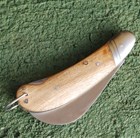
traditional-pruning-knife–stainless-steel-by-joseph-bentley £7.99
This pruning knife takes its inspiration from traditional Victorian tools of yesteryear, when gardeners knew the true value of well designed tools and how they made light work of gardening jobs. Traditional hand crafted quality.The traditional range of garden tools has been inspired by the look, feel and quality of the tools offered in the early 1900’s. They are well crafted, manufactured with FSC timber and stainless steel.
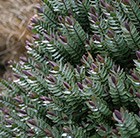
shrubby veronica £7.99
Position: full sun or partial shadeSoil: poor or moderately fertile, moist, well-drained neutral to slightly alkaline soilRate of growth: averageFlowering period: June and JulyHardiness: frost hardy (needs winter protection in cold areas)Lilac-blue summer flowers appear on short spikes, fading to white, among grey-green leaves with narrow red margins and veining when young. This small, spreading, evergreen shrub makes an attractive low, informal hedge or edging plant for a mixed border. In an urban or coastal site, it needs protection from cold, drying winds.Garden care: Needs minimal pruning. Remove misplaced or frost damaged branches in late spring.

masterwort £7.99
Position: full sun or partial shadeSoil: fertile, moist, preferably humus-rich soilRate of Growth: fast-growingFlowering period: June to SeptemberFlowers: soft pinkOther features: excellent cut and dried flowersHardiness: fully hardyDelicate, papery, soft pink flowers which are held on wiry stems above attractive deeply lobed, mid-green leaves. This delightful masterwort is a vigorous variety with a much longer flowering period than most pink or red varieties. It looks particularly fetching planted with grasses and is garden designer, Piet Oudolf’s favourite masterwort.Astrantias have been cultivated in Britain since the 16th century and have numerous common names, such as melancholy gentleman, Hattie’s pincushion and the more well known masterwort.Garden care: Incorporate plenty of organic matter when planting and water well in dry weather especially newly established plants. Lift and divide large clumps in early spring and apply a generous 5-7 cm mulch of well-rotted manure or garden compost around the plant. Divided specimens may take some time to establish since they don’t like having their roots disturbed.
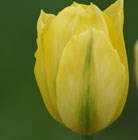
viridiflora tulip £3.99
Position: full sunSoil: fertile, well-drained soilRate of growth: averageFlowering period: MayFlower colour: yellow with a green flushOther features: excellent cut-flowersHardiness: fully hardyBulb size: 12+We think this recently introduced variety will be a big hit for both gardeners and flower arrangers alike. The traditionally shaped, yellow flower is flushed with cream and has a lime green streak, which creates a zesty mix that looks really fresh.Garden care: In September to December plant bulbs 15-20cm deep and 10-15cm apart in fertile, well-drained soil. Alternatively, allow 7-9 bulbs per 30cm sq. After flowering dead-head and apply a balanced liquid fertiliser each week for the first month. Once the foliage has died down naturally lift the bulbs and store in a cool greenhouse.






